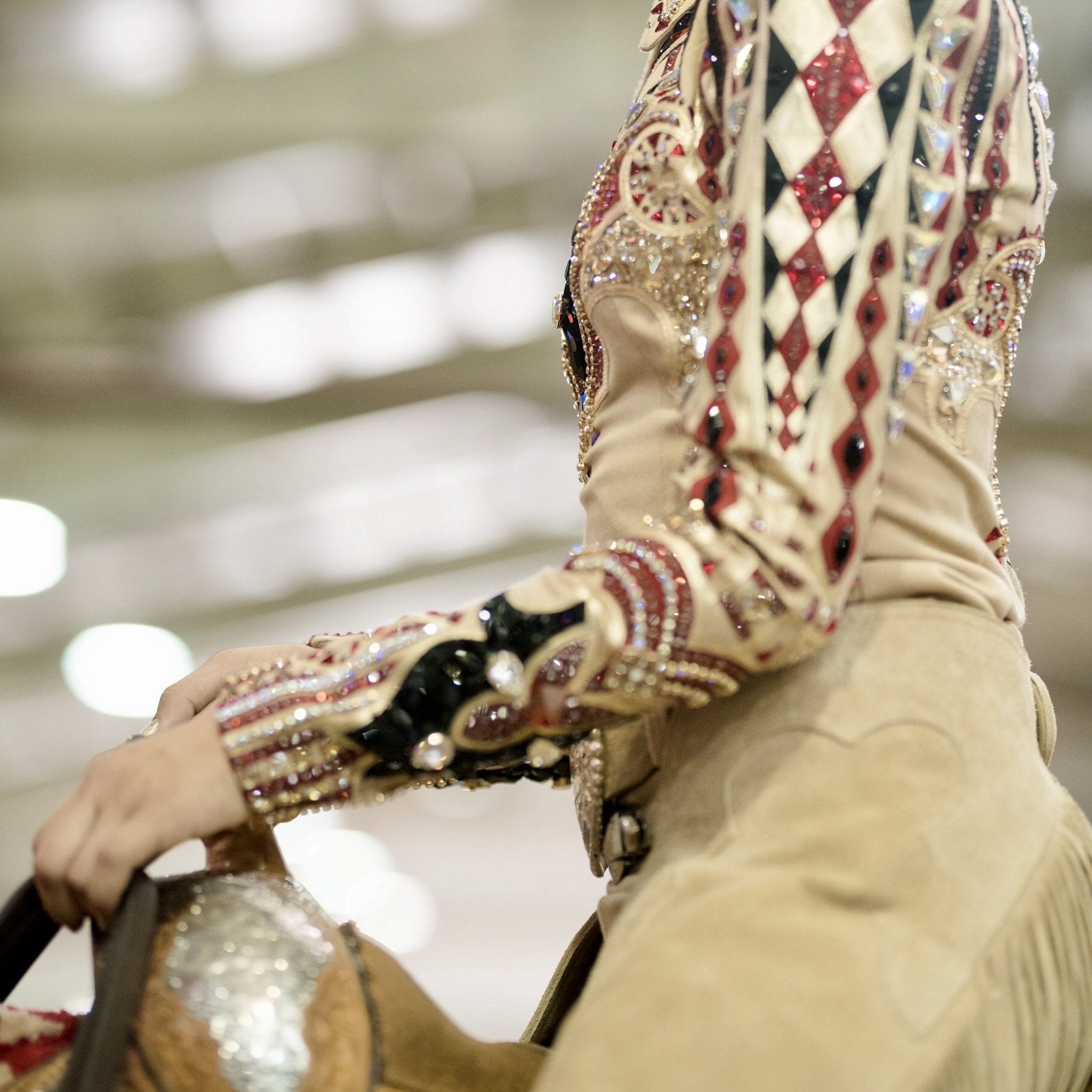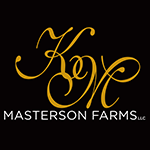Horsemanship and hunt seat equitation are two classes that focus on the rider’s ability to successfully maneuver their horse and where the scores are based on the rider’s performance, not the movement of the animal.
A flawless horsemanship or equitation pattern is always pleasing to the eye as it showcases the bond between horse and rider and the communication between them.
However, watching a pattern in which the horse displays a “bad behavior” sends the message that the bond and communication between horse and rider is lacking.
For the rider, it can be a frustrating and seemingly endless problem if one does not known how to fix it.
GoHorseShow sat down with top AQHA judges and Professional Horsemen, Brent Tincher and Kelly McDowall, to find out how to avoid six common undesired behaviors in pattern horses and how to fix them if you are already having challenges.
 Keeping in mind the nature and definition of horsemanship and equitation, it might be worth noting that both Tincher and McDowall agree that these issues are largely caused by rider error, so preventing and/or correcting the unwanted behavior relies largely on the rider doing their part.
Keeping in mind the nature and definition of horsemanship and equitation, it might be worth noting that both Tincher and McDowall agree that these issues are largely caused by rider error, so preventing and/or correcting the unwanted behavior relies largely on the rider doing their part.
McDowall (pictured right) simply said, “Horses learn bad behaviors because people teach it to them.”
“Horses are not innately naughty,” Tincher added. “They actually allow you to educate them. So when a horse is being ‘naughty’, I tend to look at the rider first and what they are doing to create the issue.”
The Drama Queen
 Do you have a friend who can be a bit of a drama queen? Where the smallest thing becomes the biggest deal in the blink of an eye?
Do you have a friend who can be a bit of a drama queen? Where the smallest thing becomes the biggest deal in the blink of an eye?
When a horse comes out of the bridle, they are like this drama queen friend who respond quickly and overreact. They are responding to something small you are doing in a big way.
“If a horse comes out of the bridle, I really blame that on the lack of leg the rider is using,” said McDowall. “You have to use your leg to actually put the horse in the bridle which also encourages them to lengthen their stride.”
McDowall cautioned to not confuse this with a spur-stop technique, in fact, in order to get a horse that is soft in the chin and keeps their neck down, they actually practice a lot of fast circles.
“That leg encourages them to put that neck down and lengthen their stride which results in them coming into the bridle,” he said.
 Tincher said, “If a horse comes out of the bridle regularly, the horse clearly doesn’t trust that person’s hands and won’t be obedient. This comes from the basics. If a horse is coming out of the bridle, something was skipped and the homework was not completed because if they trust your hands, they won’t come out of the bridle.”
Tincher said, “If a horse comes out of the bridle regularly, the horse clearly doesn’t trust that person’s hands and won’t be obedient. This comes from the basics. If a horse is coming out of the bridle, something was skipped and the homework was not completed because if they trust your hands, they won’t come out of the bridle.”
Tincher (pictured right) said that in his program, they ride two-handed 70-80% of the time to continue working on the horse being obedient, responsive, and trusting of the rider’s hands.
The Worry Wart
 You know that friend that you have who worries about everything even when there is nothing to worry about? You assure them that everything is going to be just fine but they insist otherwise?
You know that friend that you have who worries about everything even when there is nothing to worry about? You assure them that everything is going to be just fine but they insist otherwise?
Horses that are antsy or “worried” at the start cone are an all too common problem in any pattern class, and it might surprise you that the rider is more than likely the culprit.
“I’ve never had a horse that is antsy at the cone where the rider is calm,” said McDowall. “Generally when you see horses that aren’t comfortable at the cone, the rider is walking in the pen banging their legs and bumping on the bridle. The horse eventually learns that the cone equals this kind of nervous habit in the rider and they feed off that.”
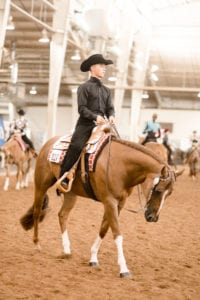 McDowall said that they try to simply eliminate this problem by never practicing horsemanship with a start cone at home.
McDowall said that they try to simply eliminate this problem by never practicing horsemanship with a start cone at home.
“We try to not create the problem at all, instead of having to fix it,” he said.
Tincher agreed that how a rider is approaching the ride, even the warm up rides can lead to an issue at the start cone and that if a horse is nervous at the start cone, it honestly just may need more exercise.
“Look at who is riding the horse and how they are approaching the ride,” he said. “If the rider is making the ride action-packed instead of just doing some different exercises or just loping around, that hurts rather than helps.”
“Short, intermittent rides work well, but the idea is to peel off a layer of energy,” he said. “Not to get a whole bunch of work done.”
The Johnny On The Spot
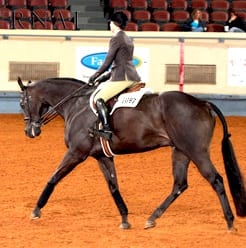 We all have that one friend who is up and ready for anything no matter what. In fact, they are usually the first one ready and they know what’s going on before anyone else does.
We all have that one friend who is up and ready for anything no matter what. In fact, they are usually the first one ready and they know what’s going on before anyone else does.
While this may be a good trait in a friend, it’s not a great trait in a pattern horse. Horses that anticipate the next maneuver are frustrating because like your friend, there is simply no stopping them.
“Horses that anticipate usually stem from a rider who wanted and needed the gratification of doing the pattern a million times before actually setting foot in the show pen,” said Tincher. “They forget that they are one part of a two part team and while they think doing the pattern over and over is helping them they don’t realize it isn’t helping the horse.”
In fact, consider not ever doing the actual pattern ever. That’s right, not even once.
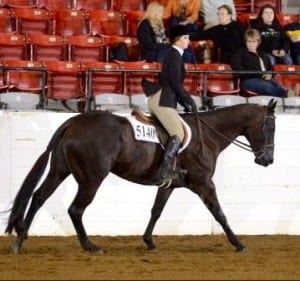 “It’s a given that every horse will anticipate the next maneuver if you do the pattern in the right order, especially multiple times,” McDowall said. “Try to just learn the pattern in your head or if you need to, walk it out on foot. Your daily routine at home should include all the basic elements of a horsemanship pattern, so really you shouldn’t have to practice the pattern itself.”
“It’s a given that every horse will anticipate the next maneuver if you do the pattern in the right order, especially multiple times,” McDowall said. “Try to just learn the pattern in your head or if you need to, walk it out on foot. Your daily routine at home should include all the basic elements of a horsemanship pattern, so really you shouldn’t have to practice the pattern itself.”
Tincher agreed, “If you’re not putting in the maintenance at home, it’s not just going to happen at the show. Maintenance means doing the fundamentals. Don’t see how hard or fast they can do each maneuver all the time, either. You have to trust in the horse’s training and that they will do what you ask at a specific spot.”
If a horse is anticipating a certain maneuver, even at home, Tincher recommends getting the horse to soften, set them up for whatever you want to do, but don’t do it.
“Keep breaking the maneuver down like that until the horse is waiting on you,” he said.
The Sensitive Sally
 Do you have a friend who cries at Kleenex commercials? Oohs and ahhs at every picture of a baby kitten, or gets their feelings hurt really easily? Sure you do. We all do.
Do you have a friend who cries at Kleenex commercials? Oohs and ahhs at every picture of a baby kitten, or gets their feelings hurt really easily? Sure you do. We all do.
Sensitive horses, like sensitive people, require a little bit of extra attention. And even in this case, the rider can be the culprit of their horse being overly sensitive.
“If you have to win every weekend, you will probably get a sensitive horse,” Tincher said. “Taking the time to school in the show pen, in a respectful manner, at the weekend shows is always key in achieving long term goals.”
As an example, Tincher used the maneuver of a lead change while coming out of a circle. If the horse doesn’t set up right or seems to anticipate, he recommends performing an extra circle or two before actually continuing the pattern. This helps to teach that sensitive soul to relax a bit.
Probably not surprising is, just like the worry wart, a sensitive horse may be behaving that way due to lack of adequate exercise.
“Sensitive horses tend to not be exercised enough,” said McDowall. “You need to get the nervous energy out before expecting them to perform well in the show pen. If it comes down to it, wear duller spurs or feed a natural and legal supplement to aid in their demeanor. I also find that some of these sensitive horses need the support of some extra piece of equipment in practice, like draw reins for example. Being ridden too loose too frequently can add to their sensitivity.”
The Procrastinator
Ever invite a friend to hang out (or any other activity like dinner, a movie, a trip to Thailand, etc.) only to have them drag their feet on getting back to you with an answer? You ask and ask and they keep giving you excuses?
Friends like this are like pattern horses that have non-point earning backs or turns. They drag their feet, they are kind of slow, and you guessed it, the problem may be you.
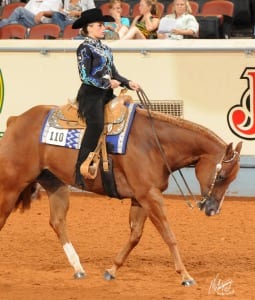 “A lot of people get in trouble with the back up and the turns,” said McDowall. “It usually is because they cluck and tap and cluck and tap and nothing ends up happening. The horse then learns that they really don’t have to go anywhere in a hurry.”
“A lot of people get in trouble with the back up and the turns,” said McDowall. “It usually is because they cluck and tap and cluck and tap and nothing ends up happening. The horse then learns that they really don’t have to go anywhere in a hurry.”
In McDowall’s program, the pattern horses are expected to go somewhere once a cluck has been cued. If not, a strong leg comes to them until they decide they better go somewhere.
“We work on this a lot, as we like our horses to learn to be fast in these maneuvers,” he said. “Obviously if you have a young horse, you have to build up to this and focus more on balance, but for our older, seasoned horses, they know that once they hear that cluck if they don’t move fast, there is going to be a strong leg/spur that follows.”
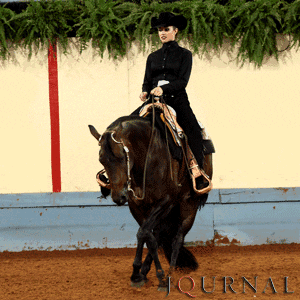 “Having a fast back or turn isn’t going to happen overnight,” added Tincher. “If you watch the reiners, you will see that horses that drag their feet in these maneuvers generally aren’t moving forward very well either. They are too much on their front end. Practice walking up and letting them get off that front end in order to perform the maneuver. It takes time but what you put into it, you will get out.”
“Having a fast back or turn isn’t going to happen overnight,” added Tincher. “If you watch the reiners, you will see that horses that drag their feet in these maneuvers generally aren’t moving forward very well either. They are too much on their front end. Practice walking up and letting them get off that front end in order to perform the maneuver. It takes time but what you put into it, you will get out.”
The Lazy Larry
Lastly, there is that friend who never wants to do anything. They don’t even skirt the question, they just say no. And if they do say yes, you can guarantee they won’t want to do anything crazy or for a long time.
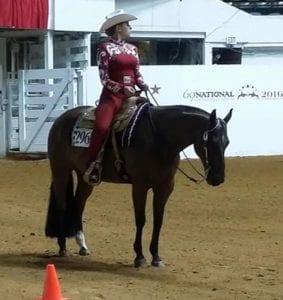 Lazy horses, generally, are unlike the other bad behaviors we have discussed (as in, the rider is innocent), but it doesn’t mean it can’t be problematic.
Lazy horses, generally, are unlike the other bad behaviors we have discussed (as in, the rider is innocent), but it doesn’t mean it can’t be problematic.
While you wouldn’t suggest to your lazy friend to skip exercising, for McDowall that is exactly how you deal with a lazy horse.
“On the flip side of a sensitive horse, lazy horses shouldn’t be exercised much as you don’t want to leave it all in the practice pen,” he said. “You may also need to wear a sharper spur and feed them snacks to keep them on the fresh side.”
“How you respond to a lazy horse is key,” said Tincher. “Their reaction time is generally a little slower, so you need to accommodate for that when performing your maneuvers. You can also make a heavier horse more responsive by rewarding them when they signal that they are thinking about what you are getting ready to ask them for. It’s important to remember that each horse is different. There’s not a key except the key to that horse.”
Photos @ KC Montgomery, Journal, Jessica Baird, Carey Nowacek, Kirstie Marie Photography, and Shane Rux
About Chenay: A Tucson, Arizona native Chenay started riding Pony Hunters at 6 years old until she found a passion for Paint horses in 1993. She began showing at APHA approved shows in November of that year and continued on with a successful Youth career until 2000. She went on to graduate from the University of Arizona in 2006 with a dual Bachelor of Arts in English and Creative Writing. Today, she lives in Yucaipa, California with her husband, son, and lots of animals, including a rescued APHA mare.


